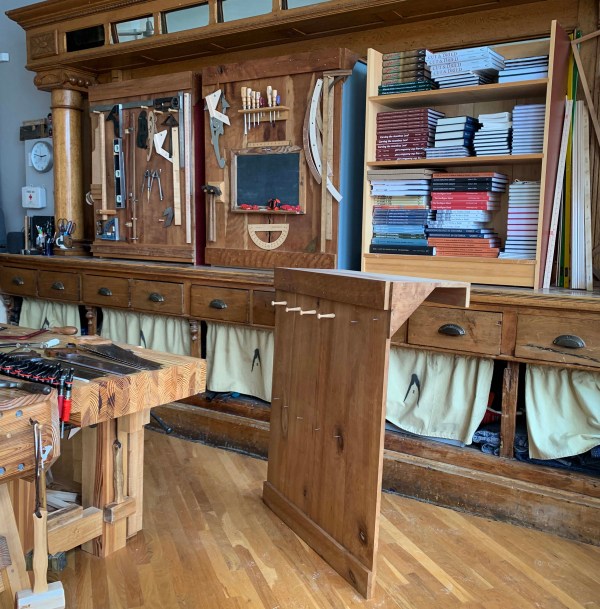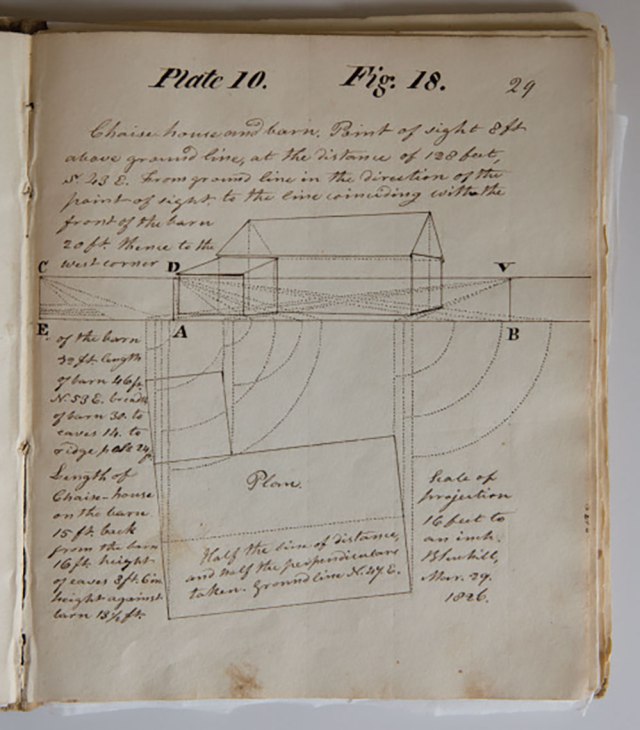
This is an excerpt from “Shaker Inspiration: Five Decades of Fine Craftsmanship” by Christian Becksvoort.
Full-panel construction, sometimes called slab or wide-panel construction, consists of a single board, or a series of boards glued up to form a wider panel. In a case piece, the grain would run up one side, across the top, down the other side and along the bottom. As reiterated from Chapter 1, wood moves across the grain but not in length. Consequently, a carcase built using wide panels will retain its height and width, but the front-to-back depth will vary depending on the seasons and humidity. In the case of a blanket box, the grain wraps all the way around, and the height varies from summer to winter.
Frame-and-panel (or stick-and-panel) construction consists of a relatively narrow frame running around all four sides of a panel, which, no matter what the size of the panel, is free to “float” in the frame, and has no bearing on the wood movement of the frame. Because the frame has long grain running up, across, down and back, the frame remains the same size year-round. There are pros and cons to both approaches, so let’s have a closer look.

Until the Middle Ages, Western furniture was all constructed of wide boards or joined panels. However, the Egyptians, as early as the reign of Tutankhamun around 1,300 BCE, used frame-and-panel construction for some of their very ornate pieces. The obvious advantage to wide-board construction is that it’s much less work. A six-board chest requires six boards, joinery or nails, and voilà, you’re done. If you’re going to use frame-and-panel construction for all six surfaces, you will require at least five pieces of wood for each surface, or 30 pieces of wood for the entire exterior case. All those pieces have to be edged, grooved and mortised or tenoned. Right off the bat, the frame-and-panel construction is much more work. Most frame-and-panel building is actually a hybrid, utilizing frames and panels for the sides, bottom and back, and a wide board or panel for the top. Nobody wants an expansion gap on a desktop or cabinet top. The same goes for shelves, and sometime bottoms, if the interior is to be used as a shelf. It just invites dust and crumbs to collect on any horizontal surface gaps. So the top of a desk or cabinet, or shelves made with single panels, have to be attached in a manner that allows wood to move with the seasons. With all that extra work, you get a cabinet that is extremely stable, and all those frames can be glued together in any configuration without having to deal with movement (except for the top and shelves).

Wide-panel cases go together much faster and look a lot cleaner, because there are not gaps or interruptions in the grain. Once the four sides are together, expansion and contraction becomes a major issue whenever grain runs perpendicular to an existing panel. Think doors, backs, web frames and mouldings. Most woodworkers opt for an approach that is a hybrid in those situations.
— Meghan B.